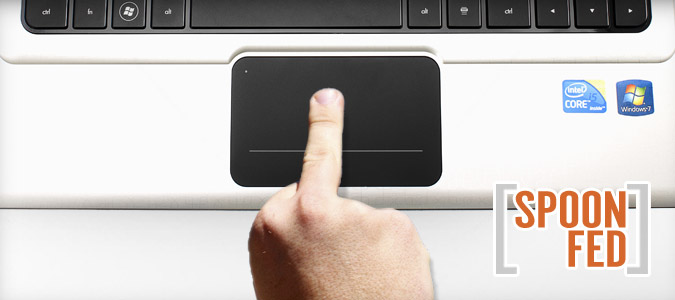Terrible Touchpads Give You the Finger

When you think about how much laptops have evolved over the past couple of years, it’s staggering. You can now get screaming-fast quad-core power inside a machine that weighs less than 4 pounds. Many notebooks can switch between integrated and discrete graphics on the fly. You’ll even find some models with 3D displays or tech that lets you stream video wirelessly to your HDTV. Yet even with all of these advancements, notebooks have taken serious steps back in some ways. The “evolution” of the touchpad seems to have moved from a utilitarian pointing device to a mere decoration.
In the interest of full transparency, I’m a pointing stick snob. I love the precision offered by the ThinkPad that I use as my primary notebook. It’s always pinpoint accurate, no tweaking required. But I’ve also used plenty of touchpads that work well, and it’s easy to tell the good ones from those that make you want to throw the laptop down a flight of stairs. My biggest pet peeve is touchpads that integrate mouse buttons. Let me clarify: Windows notebooks featuring touchpads with integrated buttons.
HP has been one of the biggest offenders with its Pavilion and Envy lines. One system I reviewed recently had a touchpad so wonky that the slightest brush against the surface while typing moved the cursor. Other times the notebook would shrink or enlarge webpages or documents, registering an errant second finger as a pinch gesture. A subsequent driver update made the laptop more usable, but we still docked a half star from an otherwise great system because of subpar ergonomics.
Other Windows notebook vendors continue to experiment with touchpads, sacrificing style for substance. Take the Gateway ID49—the first notebook we’ve tested with a glowing touchpad. The effect is kind of cool, but the whole device depresses when you click the touchpad, making you use more force and wait longer for your next move.
In general, I also dislike touchpads with glossy or mirrored surfaces. Take the Acer Aspire 8943G. It’s neat that the touchpad houses hidden touch media controls, but the glossiness causes unnecessary friction when all you want to do is move the cursor from point A to point B. The fingerprint smudges don’t help, either.
Palm rejection is another issue. As touchpads enlarge to enable multitouch gestures, so does the risk of making unintended movements. I especially notice this problem on laptops whose touchpads sit very closely to the keyboard, such as the Toshiba Portege R700. For the most part, Windows notebooks aren’t smart enough to know when you’re typing. Yes, you can dig into the settings in some cases to dial up Palm Check sensitivity, but you shouldn’t have to.
When notebook makers do see fit to include dedicated mouse buttons, they often skip discrete left and right buttons in favor of a single bar. I’m not a fan of this approach at all because, in a lot of cases, there’s not a clear delineation between left and right; or the bar might be too stiff, narrow, or both. Using any notebook takes some adjustment, but the best laptops don’t have a steep learning curve. They just work the way you expect, pretty much right out of the box.
Stay in the know with Laptop Mag
Get our in-depth reviews, helpful tips, great deals, and the biggest news stories delivered to your inbox.
For some reason, Apple’s MacBook and MacBook Pro touchpads are miles better than anything in the Windows camp. They’re silky smooth, offer multitouch gestures that don’t take any practice or patience, and have buttons that click when you actually want them to. The experience is so good, in fact, that Apple saw fit this week to release an external Magic Trackpad, which some say puts the mighty mouse on notice. (Note to Apple: please make a Windows version.)
Will I ever give up my precious pointing stick? Maybe. Leading touchpad maker Synaptics says it hears my complaints loud and clear and is revamping its ClickPad. It boasts a new mechanical design, as well as Image Sensing Technology that offers more multifinger capabilities usually reserved for touchscreens. More important, new SmartSense technology should prevent accidental palm activation of the cursor. These advancements can’t come soon enough.
At the end of the day, I’m psyched by many of the innovations and cutting edge components today’s laptops possess. But in too many cases these whiz-bang features get cancelled out by lackluster ergonomics. Consumers deserve a notebook that’s both powerful and easy to use. And only those systems will earn our Editors’ Choice.
Editor-in-chief Mark Spoonauer directs LAPTOP's online and print editorial content and has been covering mobile and wireless technology for over a decade. Each week Mark's SpoonFed column provides his insights and analysis of the biggest mobile trends and news. You can also follow him on Twitter.

